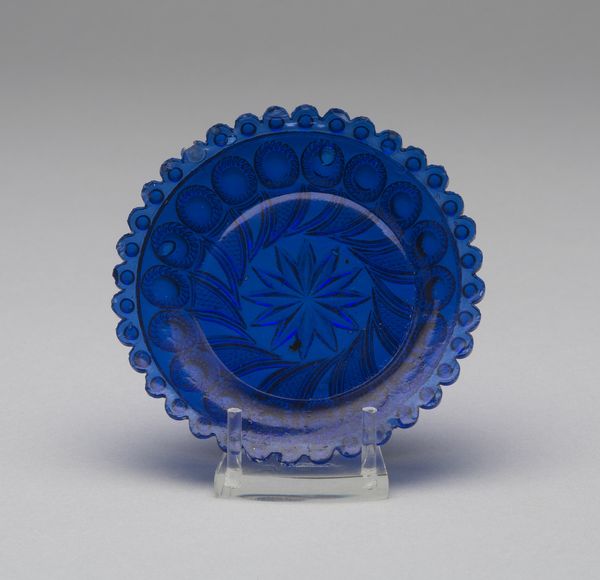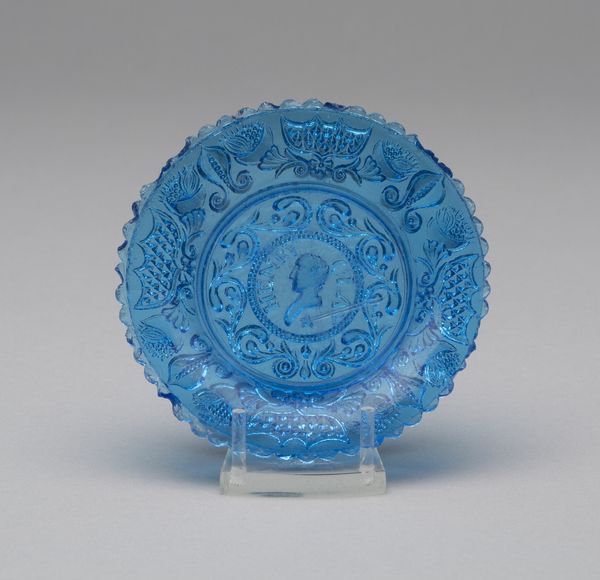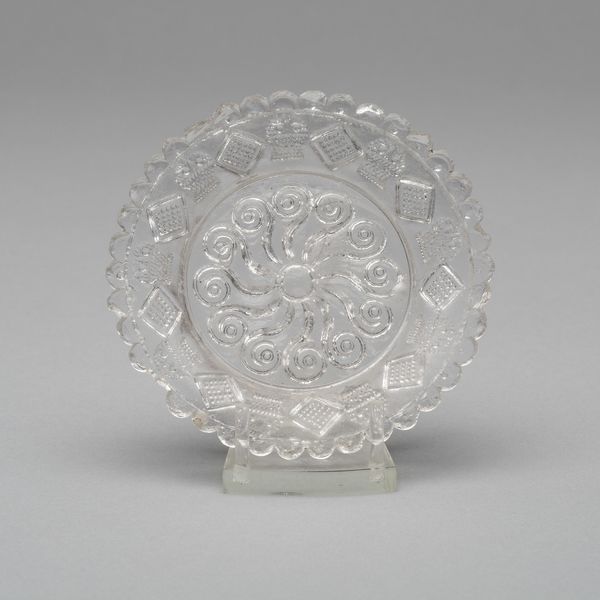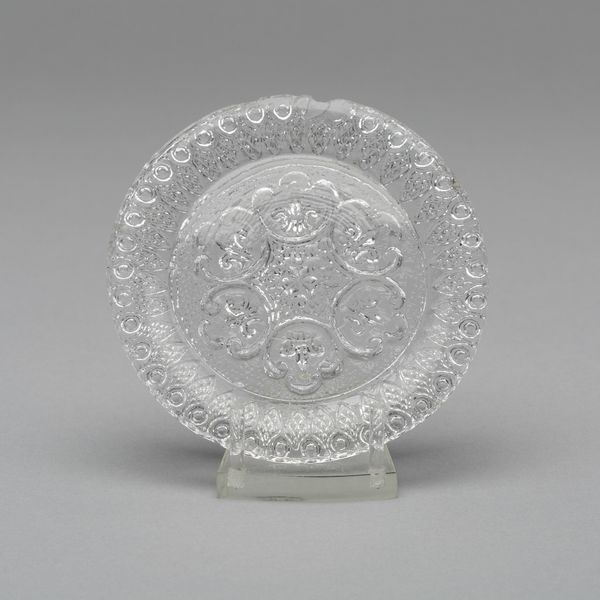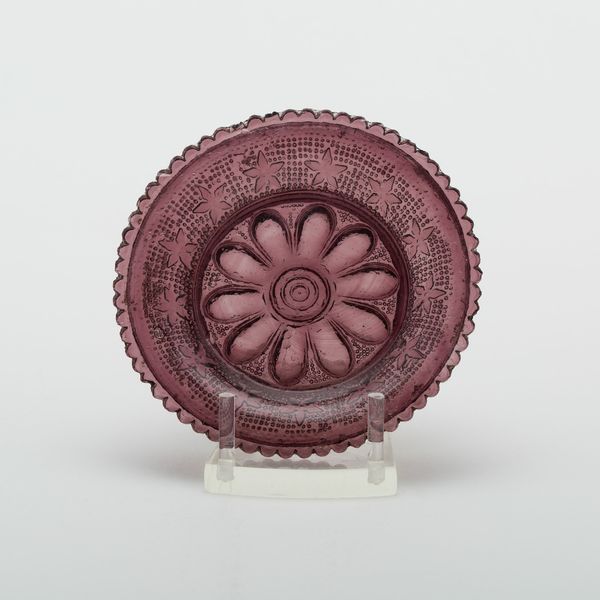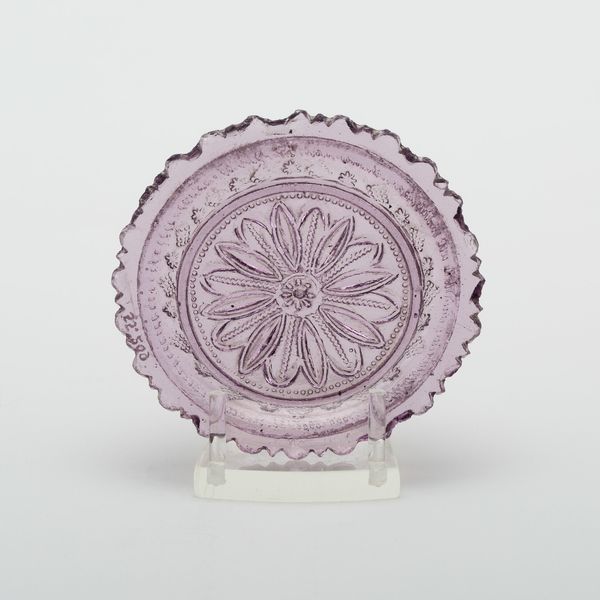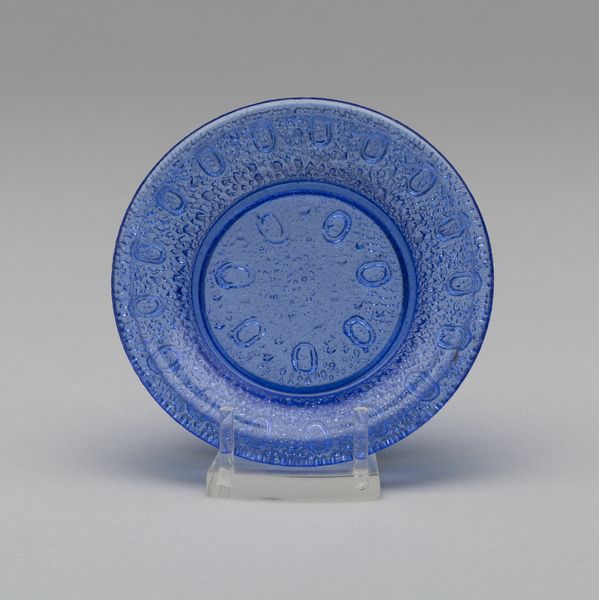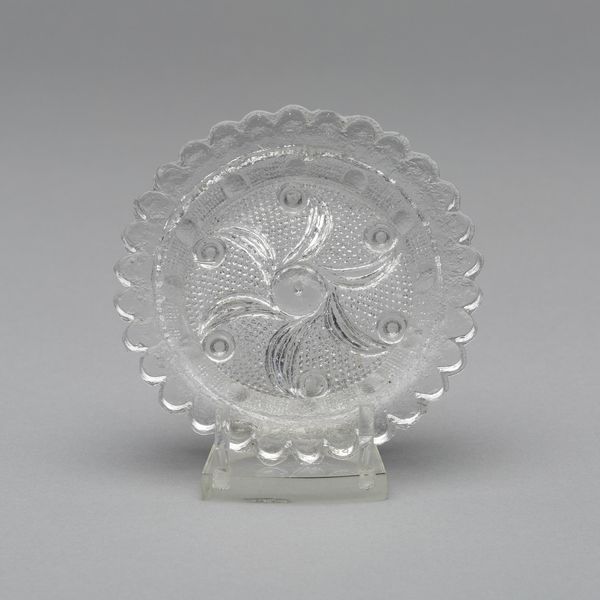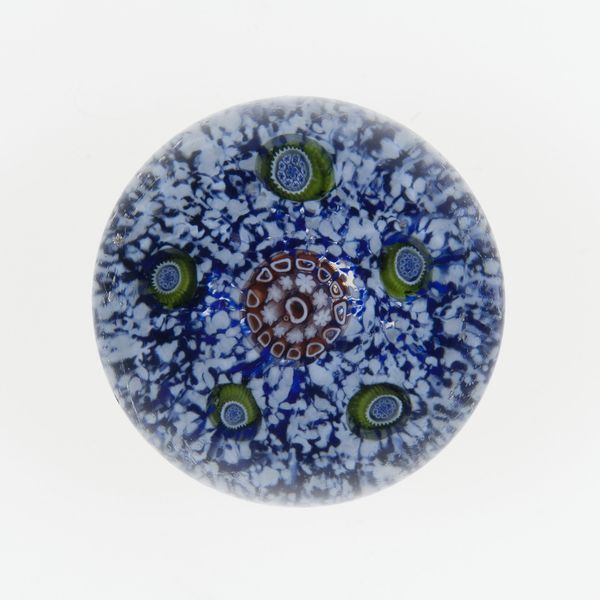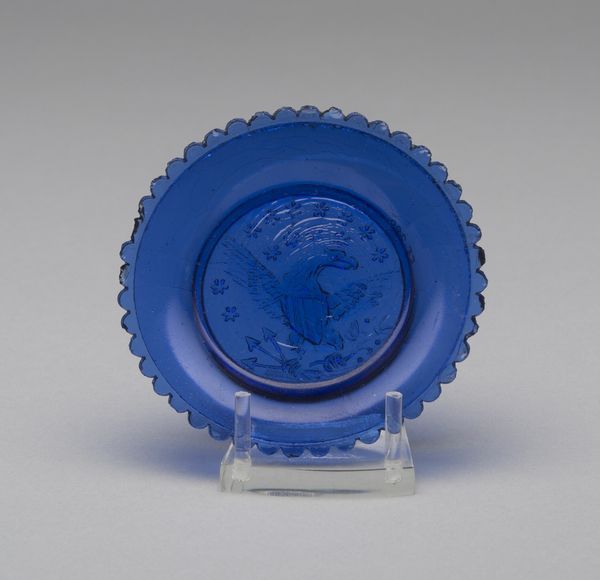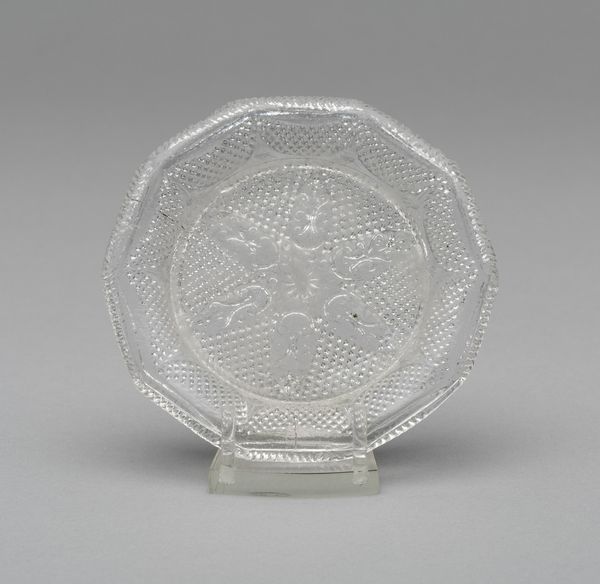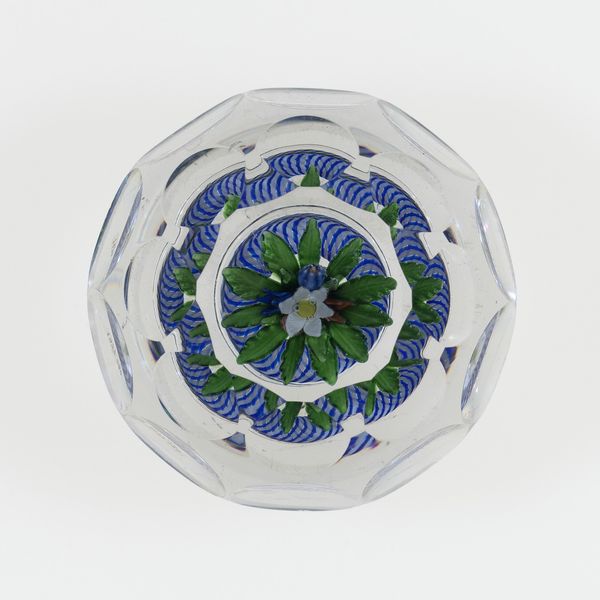
glass
#
glass
#
decorative-art
Dimensions: diam. 8.4 cm (3 5/16 in.)
Copyright: Public Domain
Editor: This is a "Cup Plate," made of glass around 1835-1840, and currently residing at the Art Institute of Chicago. I find its deep blue color and repeating heart motifs quite charming and almost childlike. What do you make of such a simple object? Curator: Simple, perhaps, but deceivingly rich! The industrial revolution and its impact on class is central to its understanding. The rise of industrialization democratized luxury, allowing the growing middle class access to goods once reserved for the elite. This little blue plate becomes a symbol of aspiration and belonging. What does the heart motif say to you within that framework? Editor: Well, I initially thought of romance, but given the social context you describe, it feels more about belonging and fitting in with societal norms and values of domesticity. Curator: Exactly. Consider, too, the often-overlooked labor that went into producing even these "affordable" goods. This plate may signify belonging for the consumer, but what about the glassworkers, likely working in harsh conditions? Where do their stories fit? Can a simple decorative object tell a complex story of social mobility and labor exploitation? Editor: That reframes it completely! I was seeing a charming antique, now I see a material artifact deeply entangled with complicated issues of class and labor. It is quite sobering to think about. Curator: Art, even decorative art, doesn't exist in a vacuum. It reflects and shapes our social landscape. Understanding its historical context can offer a critical lens on contemporary issues as well. Editor: This makes me want to reconsider how even everyday items can reflect bigger socio-economic contexts. Thanks!
Comments
No comments
Be the first to comment and join the conversation on the ultimate creative platform.
